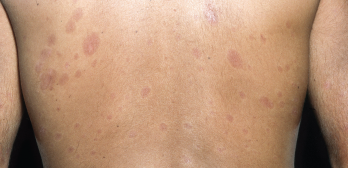
New research suggests that hardened tissues may be able to regain some plasticity.
SPL/ScienceSource.com
Systemic sclerosis (SSc) is a rare disease affecting about 49,000 U.S. adults, and it is strongly associated with high levels of morbidity and mortality.1 Of the few available antifibrotic therapies, none is targeted for SSc. However, reason for optimism exists for antifibrotic treatments in early development and clinical trials, says Jörg H.W. Distler, MD, Heisenberg Professor for Translational Matrix Biology at the University of Erlangen-Nuremberg in Erlangen, Germany. He is the lead author of a paper recently published in Arthritis & Rheumatology, “Frontiers of Antifibrotic Therapy in Systemic Sclerosis.”
“While there are some therapies used for the treatment of fibrosis in SSc, several of those treatment attempts have not proved to be effective in appropriate clinical trials, and even for those with proven efficacy, the effects are modest at best,” says Dr. Distler. “So there really is a huge, unmet medical need.”
Fibrosis is the “excessive deposition of fibrous connective tissue in an organ or tissue initiated by tissue repair programs in response to injury,” the paper’s authors describe, and fibrotic diseases can affect any organ system in the body. Fibrotic tissue responses are also common in many chronic diseases, such as atherosclerosis and pulmonary disease.2
Fibrosis was once thought to be irreversible, but recent research suggests that these hardened tissues have some level of plasticity, which may vary depending on the organ affected and the specific disease.
“We believe that different organs have different potential to regenerate. For the skin, it may not be complete regeneration of tissue, but there is the potential to restore some of the original architecture to a certain extent. We may not be able to completely reverse the process, but may induce mild regression of fibrotic changes,” says Dr. Distler. “In the past 10 to 15 years, a lot has changed in this area. SSc and other fibrotic diseases were not the main focus of the pharmaceutical industry in the past, but now, major companies are trying to develop specific antifibrotic therapies.”
A bethter understanding of the common pathways that regulate fibrotic tissue responses in affected organs led to the development of the first antifibrotic drugs, nintedanib and pirfenidone, both now approved for idiopathic pulmonary fibrosis (IPF). These two therapies have not proved effective in SSc, Dr. Distler says.
The “pathogenesis of [fibrotic] diseases is less well understood than many inflammatory diseases, and they can be harder to treat,” he says. “Fibrotic diseases, [which are] heterogeneous in nature, likely require prolonged treatment to demonstrate efficacy in clinical trials, and some are orphan diseases. It’s more difficult to recruit patients for clinical trials for therapies for these diseases.” Many patients with SSc have multi-organ involvement, such as skin and pulmonary fibrosis, which also adds to the complexity.
5-HT & Other Mediators
Early in the SSc disease process, reduced blood flow in damaged vessels can lead to the activation and degranulation of platelets.3 Antiplatelet therapy has shown promise to ease fibrosis in the aortic valve, heart, kidney and liver.4,5

